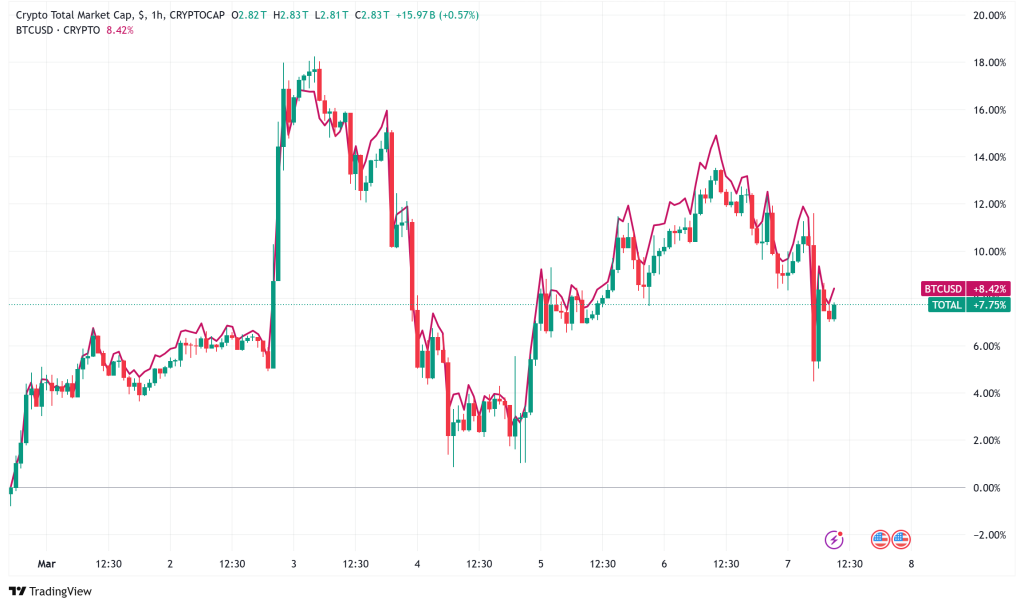Asia stocks extend global market rout on Trump tariff shock, recession fears; STI down 1.4%
– Asian share markets sank again on April 4, extending a global market sell-off after US President Donald Trump’s worldwide tariff salvo fanned a trade war that many fear will spark recession and ramp up inflation.
Singapore’s Straits Times Index tumbled 2.9 per cent, or 114.13 points, as at the midday trading break, after ending 0.3 per cent lower the previous day. After the stock market closed on April 3, Deputy Prime Minister Gan Kim Yong said the sweeping tariffs will have a significant impact on Singapore.
Japan’s Nikkei 225 index tumbled 3.5 per cent, adding to a drop of 2.77 per cent on April 3. Australia’s S&P/ASX 200 slid 2.1 per cent, while South Korea’s Kospi index lost 1.6 per cent.
Markets are closed on April 4 in China, Hong Kong and Taiwan for holidays.
In pre-market trading in the US, futures tied to the Dow Jones Industrial Average fell 222 points, or 0.6 per cent, with the S&P futures and Nasdaq futures also down 0.6 per cent.
Overnight, US stocks and the dollar suffered their worst day in years after Mr Trump’s latest tariff measures sparked a global flight to haven assets.
The S&P 500 fell 4.9 per cent and the Nasdaq 100 slumped 5.5 per cent on April 3, the biggest drop since 2020 for each, wiping around US$2.5 trillion (S$3.3 trillion) from the US stock market.
A gauge of US small-caps, which are more sensitive to US growth, plunged 6.6 per cent in a sign investors believe the President’s trade offensive will stunt the American economy.
The US dollar wiped out all of its gains since Mr Trump won the presidency in November 2024, reigniting the debate about its haven reputation during challenging times, as the yen and Swiss franc surged.
The Bloomberg Dollar Spot Index traded 0.4 per cent lower on April 4, after sliding 1.5 per cent the previous day.
Mr Ed Al-Hussainy, a strategist at Columbia Threadneedle Investment, said: “We may be at the very early stages of a structural sell-off in the dollar.”
Oil extended its plunge after diving more than 6 per cent overnight after the Organisation of the Petroleum Exporting Countries and its allies unexpectedly increased supply by three times the planned amount in May.
All in, the much-vaunted America-first trade – buying up assets that win when the US outperforms the rest of the world – is reversing on concern that the steepest increase in American tariffs in a century will hammer economic growth.
The scramble for havens drove a fierce rally in the prices of ultra-safe government bonds that provide a guaranteed income. That sent the yield on benchmark US Treasuries briefly below the closely watched 4 per cent level. Most other yields also tumbled as money markets priced in a 50 per cent chance of the Federal Reserve delivering four quarter-point rate reductions in 2025. Falling interest rates benefit bond prices.
“If these tariffs stick, the economy is going to slow down,” said Ms Mary Ann Bartels at Sanctuary Wealth. “Whether it is a recession or not, it is clear that the economy is headed for a slowdown in the US and around the world. There is no place to hide, but the fixed-income markets.”
The trading forms a volatile backdrop for the April 4 US jobs report and a speech by Fed chairman Jerome Powell, which should set the tone for markets worried about the outlook for the world’s largest economy.
Mr Trump has embraced tariffs as a tool to assert US power, revive manufacturing at home and extract geopolitical concessions.
Economists say the near-term result of his measures will likely be higher US prices and slower growth, or perhaps even a recession.
As spiralling tariff worries hammer US stocks, legendary investor Bill Gross is urging prospective dip-buyers to stay on the sidelines.
“Investors should not try to ‘catch a falling knife’,” he said in an e-mail. “This is an epic economic and market event similar to 1971 and the end of the gold standard, except with immediate negative consequences.”
With Asia bearing the brunt of the new US tariffs, economists, including Goldman Sachs Group, cut their growth forecasts for countries in the region.
For the US, the world’s biggest economy, the chances of a recession have risen to 50 per cent or higher, Mr Jim Zelter said in a Bloomberg Television interview on April 3.
The risk that tariffs accelerate inflation and constrain the Fed’s ability to stimulate growth by slashing rates has also risen materially, he said.
Recession fears have been rising and that is visible across various asset classes
Money managers have rolled back exposures to American equities to levels not seen since November 2023, according to a poll by the National Association of Active Investment Managers. Hedge funds dumped global stocks at the fastest rate in 12 years in March, according to Goldman Sachs Group data.
“I have no doubt that over the near term, tariffs will be detrimental to growth,” said Ms Irene Tunkel at BCA Research.
“We have gone through the first stage of this calamity and, as I said before, this is bad for financial markets. The first stage is peak uncertainty. The next stage will be downgrades in earnings.”
Elsewhere in commodities, gold fell from a fresh record high on April 3 while copper shed as much as 3.5 per cent. Soybeans dropped the most since January on worries American crops will suffer from retaliatory tariff measures, and cotton plunged by the exchange limit. BLOOMBERG
Join ST's Telegram channel and get the latest breaking news delivered to you.










